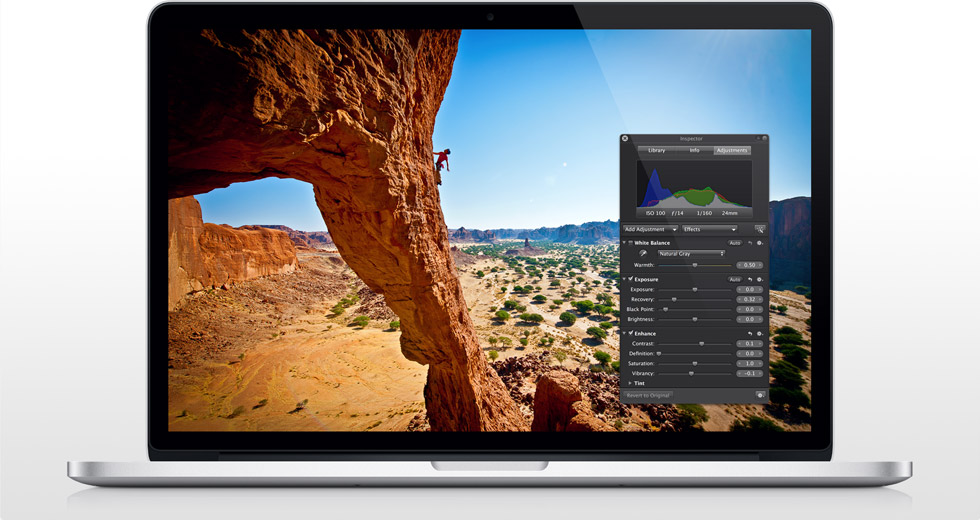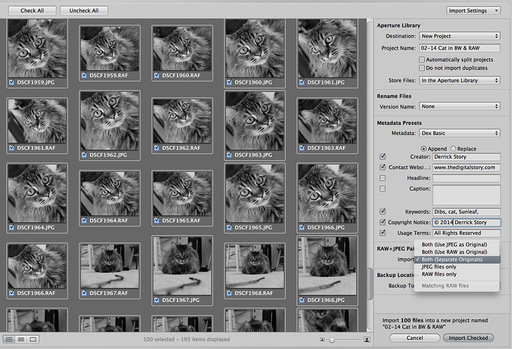Aperture 3.5 Mac
Apple Aperture review: version 3.5.1 January 3, 2014 by Rod Lawton Life after Photoshop features dozens of tutorials for Apple’s professional image cataloguing program, but for any Mac owners who want more information before taking the plunge, here’s a full Aperture review which explains what it does and puts the tools in context.
Aperture 3.5 – Post-production photography solution. October 25, 2013 Apple Aperture is designed from the ground up for professional photographers and provides everything you need for after the shoot, delivering the first all-in-one post-production tool for photographers. In this video we post process an image of the Rockies from Vail, Colorado. It is simply my own interpretation of what i wanted this scene to look like. Aperture works with most DNG files generated from cameras that support this format and with DNG files generated by the Adobe DNG Converter with the “Convert to Linear Image” option turned off. RAW Support Requirements. Aperture 1.5 or later with Mac OS X v10.4.11 Tiger or Mac OS X v10.5 Leopard or later. In spite of my whining, Aperture runs GREAT on my 2010 hex-processor 3.33GHz, 8GB RAM Mac Pro. It just flies through my DNGs as if they're JPGs, and 1GB of code is only a fraction of the data I shoot in a day in DNG.
Only Aperture 3.6 is fully compatible with MacOS X 10.10.3, so you need to update to version Aperture 3.6. after upgrading to MacOS X 10.10.3.
But Aperture is no longer sold at the Mac App Store, and the Updates page will show 'Currently not available', and we can neither update from the Updates page nor buy the upgrade from the main 'Featured' page of the store.
As a work-around: Reinstall Aperture instead of updating it.
If Aperture is associated with your AppleID as you bought it originally from the Mac App Store or you accepted a boxed Retail version to your AppleID when you updated to Aperture 3.4.5 or later, you can reinstall from your Purchases page. In all other cases you need the help of the App Store Support as described in the last paragraph.
- Open the Purchases tab of the AppStore and sign into the Store menu with your AppleID. Is Aperture listed among your Purchases? It may be hidden. Try to unhide it, see this link: http://support.apple.com/en-us/HT4928
- Then proceed as described in Barney-15E's User Tip for iPhoto: (I replaced 'iPhoto' by 'Aperture' in the quote)
Just as a precaution, copy Aperture from your Applications folder onto an external disk or USB stick and eject that drive.
Delete Aperture from your Applications folder. Make sure there are no disks mounted that have a copy of Aperture on them. Empty the Trash.
Make sure no other users have Aperture open in the background. It is best to have all other users logged out.
I ended up having to Restart before I could clear Aperture from the App Store memory (it was still showing Update on the button in Purchases).
If it is still showing as Update, try searching Spotlight for Aperture. There may be a copy on a mounted external disk that it is identifying.
You should now be able to go to the Purchases tab and find Aperture with the Update button labeled 'Install'. Click 'Install' and it should download the current version which works with Yosemite.
When I first tried, after authenticating, it posted a 503 error and asked if I wanted to Retry. When I clicked 'Retry,' it started downloading.
It's about 1.01 GB, so it takes a little while to fully download.
2. If your Aperture 3 version does not show at the Mac App Store Purchases page, give the App Store Support a call. There is a 'Support' link in the Quick Links on the main page of the Mac App Store. Ask for a redeem code to be able to download the update. You will probably need to provide a proof of purchase and be very insistent.
Alert: Aperture vanished completely from the Mac App Store and is no longer available for reinstalling since September 26, 2015. This User Tip does currently no longer work. This no longer applies. Apple restored the ability to reinstall oldr pruchases. http://www.macrumors.com/2015/09/29/older-software-returns-mac-app-store/
Even if your camera doesn’t have GPS built-in, you can add location data to your photos using Aperture 3.5.
There are three major ways to do this. The first two involve looking up locations in Aperture’s Places, then applying that data to your images. The third technique pulls data from pictures captured with your iPhone. Since iPhone images are automatically geotagged, they can be used to mark photos captured with a regular digital camera.
Here’s how it all works.
Drag and drop using Places
This method is terrific when you’ve captured pictures at a location displayed on a map. For example, I shot a series of photos at Stearns Wharf in Santa Barbara. If I zoom in on a map of that area, the Wharf is displayed. So all I have to do is drag my pictures on to that location to tag them. Here are the steps.
1. Select the images you want to tag by command-clicking on them in the Browser (thumbnail mode).
2. Click on the Places icon in your toolbar to reveal the map in the Viewer with the selected thumbnails underneath.
3. Zoom in to get a precise location.
4. Drag and drop the images to the spot you want and reposition the pin, if necessary. The pictures will be geotagged with that location.
5. Check your work by selecting GPS from the popup menu in the Info tab of the Inspector. You should see coordinates for each image.

Using the Assign Location command
An easy alternative is to use the Assign Location command. This time, I apply geotags to a series of photos captured at the Santa Barbara Zoo. I start out by selecting the thumbnails in the Browser.
1. Go to Metadata > Assign Location.
2. Type the name of the place in the search field.
3. Choose the best option from the displayed results.
4. Refine the area shaded in purple that will be the geotagged location.
5. Click the Assign button.
6. Double check the location by selecting GPS from the popup menu in the Info tab of the Inspector.
Using an iPhone for location data
Some photographers will snap an iPhone photo while shooting on location. They can use the accompanying geographical data later to tag images in Aperture.
I used this method when visiting the Santa Monica Pier in Southern California. I captured a number of high resolution Raw and JPEG files with the Sigma DP2 camera. Since the DP2 doesn’t record location data, I also took a few photos with my iPhone.

I could share the iPhone shots immediately on Instagram and record the geotags for use later in Aperture. Back home, here’s how I applied the location information.
1. Connect the iPhone to my Mac.
2. Select the images I want to geotag in Aperture’s browser.
3. Click on Places.
4. Click on the GPS button and choose Import GPS from iPhone photos.
5. Navigate through the thumbnails and choose the photo that is closest to the desired location. Click OK.
6. Drag images on the the purple marker that appears on the map. Aperture will change the marker to a red pin and add the location data to those images.
7. Check my work by selecting GPS from the popup menu in the Info tab of the Inspector.
Exporting with geotags in place
The location data applied to the photos can travel outside of Aperture too. To make sure this happens, check Aperture’s Preferences. Click on the Export tab and confirm that the box next to include location info in exported photos is checked. Conversely, if you don’t want geotags to travel with exported pictures, uncheck the box.
You can test that all systems are go by exporting a geotagged image from Aperture. Then open the picture in the Preview app on your Mac. Hold down Command-I to reveal the General Info Box. Click on the i tab then choose GPS. If there aren’t any geotags for the image, there also won’t be a GPS button.
But if there are geotags for the picture, you’ll see a map and coordinates when you click on the GPS button. And the fun doesn’t stop there. Click on the Locate button, and if you have Max OS X Mavericks, your Mac will launch Maps and display the area where you took the photo.
Aperture 3.5
Since driving directions are available in Maps, you can send an image to a friend and they’ll know how to get there.
General area
These methods of applying location data to your images aren’t as precise as an accurate GPS accessory connected to your camera. If you need a high level of accuracy, I probably wouldn’t go this route.
But, for travel photos and general usage, adding tags to your favorite shots in Aperture is easy, and probably close enough for most applications.
Aperture 3 Mac
Use your iPhone or iPad for photography? Get pro tips for taking better images at our photography session at Macworld/iWorld in San Francisco March 27-29.